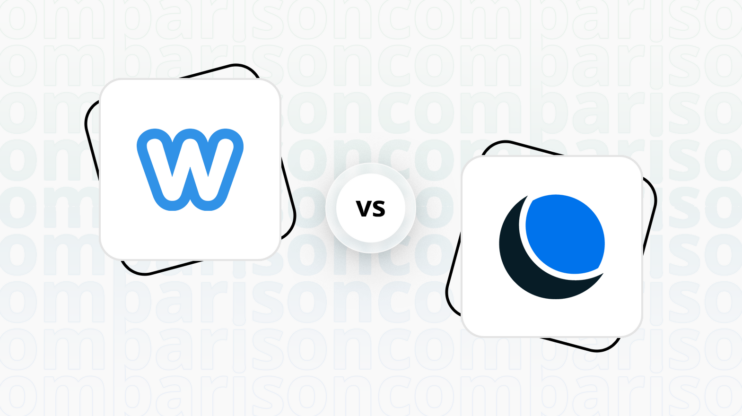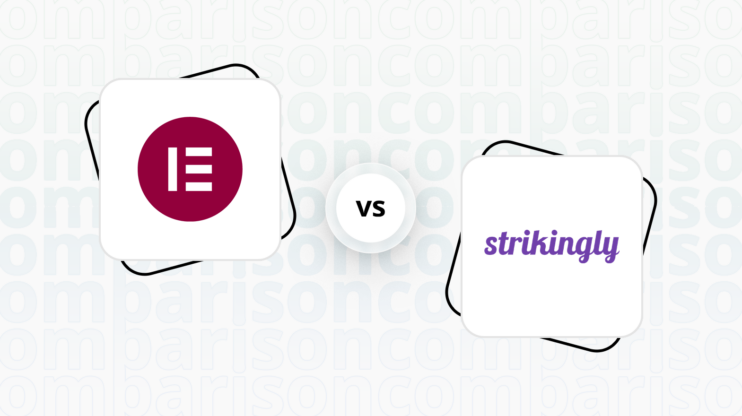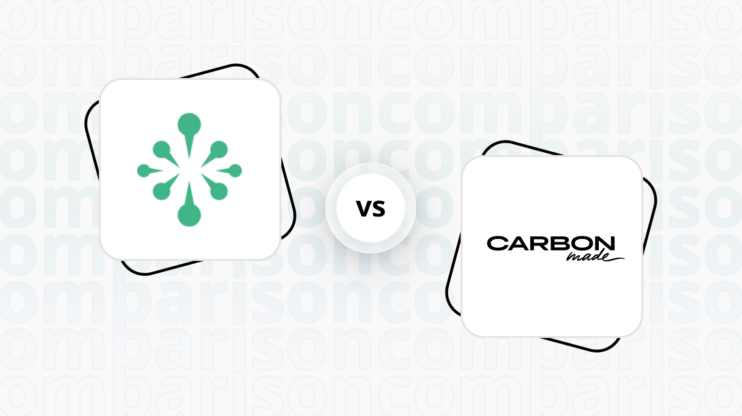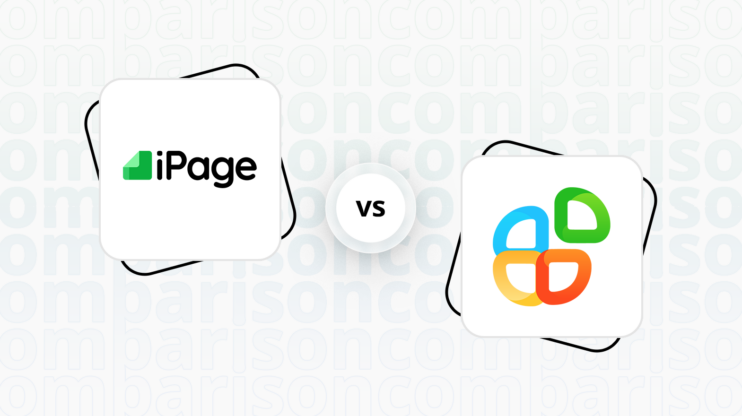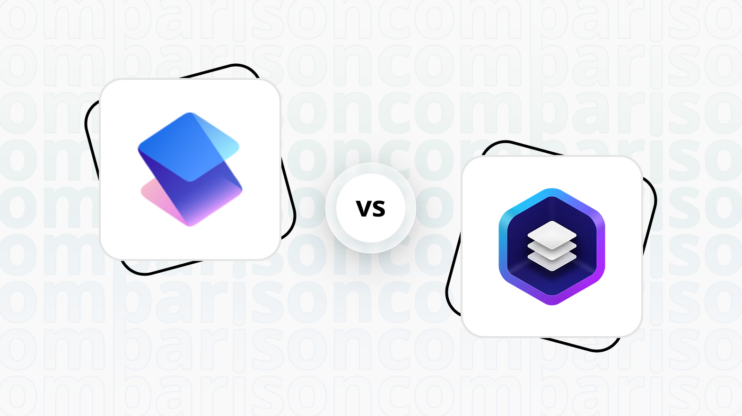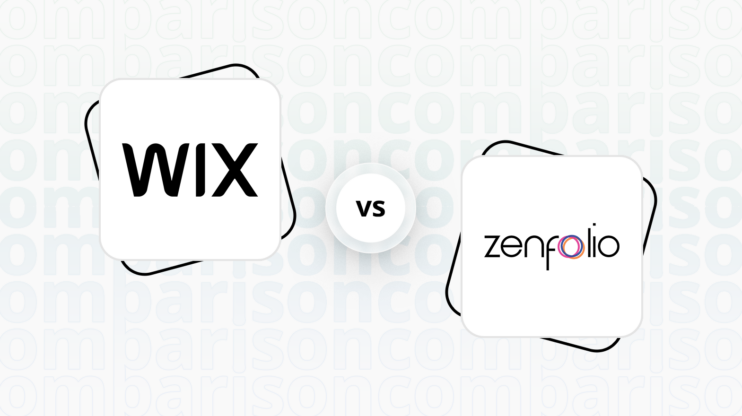Final verdict
GoDaddy and Webflow both offer comprehensive website building and hosting solutions, but they cater to different user needs and preferences.
-
GoDaddy (Overall Grade: 7.5/10)
is a versatile platform that excels in ease of use and affordability. It is particularly well-suited for beginners and small businesses looking for a straightforward, user-friendly website builder with integrated domain registration and hosting services. GoDaddy’s extensive template library and solid customer support make it a reliable choice for those seeking a hassle-free website creation experience. -
Webflow (Overall Grade: 7.9/10)
stands out for its powerful design tools and flexibility, making it ideal for professional designers and developers. It offers a robust set of features for creating custom, responsive websites without extensive coding knowledge. Webflow’s superior design functionalities, advanced ecommerce capabilities, and strong hosting quality make it a preferred choice for users who prioritize design control and scalability.

|

|
|
|---|---|---|
|
Design functionalities & templates |
8.0 |
8.6 |
|
Ease of use |
8.2 |
7.5 |
|
Ecommerce |
7.2 |
8.5 |
|
Website Editors |
6.7 |
9.0 |
|
Product testing options |
8.1 |
6.3 |
|
Price |
7.9 |
8.0 |
|
Hosting quality |
7.8 |
8.9 |
|
Website speed optimization |
7.6 |
8.1 |
|
Plugins and integrations |
7.3 |
5.5 |
|
Marketing features |
7.3 |
7.8 |
|
Customer support |
8.5 |
8.3 |
|
Security |
6.8 |
7.8 |
|
AI capabilities |
7.5 |
8.3 |
|
User Management |
7.3 |
8.3 |
| Overall |
7.5 |
7.9 |
Best for ecommerce
 7.2
7.2
 8.5
8.5
Verdict
: Webflow outshines GoDaddy in ecommerce capabilities, offering more robust features and customization options.
-
GoDaddy
: GoDaddy provides a user-friendly experience for setting up and managing online stores. It includes essential ecommerce features like payment processing, shipping options, SEO tools, and email marketing. However, it may require coding knowledge for advanced customization, making it less ideal for users seeking extensive design flexibility. Best For Ecommerce score: 7.2 -
Webflow
: Webflow excels with its comprehensive ecommerce features, including easy store creation, extensive customization, and integration with major payment gateways. It offers powerful design tools and a flexible CMS, making it suitable for professional designers and businesses looking for a highly customizable ecommerce solution. Best For Ecommerce score: 8.5
Best for informational & business websites
 7.9
7.9
 8.6
8.6
Verdict
: When it comes to creating informational and business websites, Webflow takes the lead with its powerful design tools and flexible CMS, scoring 8.6. GoDaddy, with a score of 7.9, offers a more user-friendly experience but lacks the advanced design capabilities of Webflow.
-
GoDaddy
: GoDaddy is a comprehensive platform that offers a range of services for website creation and management. It is particularly popular among beginners due to its user-friendly interface and extensive collection of over 1500 templates. However, it falls short in terms of advanced design functionalities and customization options, making it less suitable for users who require a high level of design control. -
Webflow
: Webflow is designed for professional designers and offers a robust design experience with a diverse range of templates and customization options. It provides powerful design tools, a flexible CMS, and top-tier hosting services, making it a comprehensive solution for creating custom, responsive websites. While it has a steeper learning curve, its advanced features and design flexibility make it the preferred choice for creating visually appealing and highly functional informational and business websites.
Detailed comparison
Design functionalities & templates
Design FunctionalitiesRepresents how well each platform allows for creative design and customization of websites.Score Components:
- Template Variety (30%): Range and quality of design templates.
- Customization (30%): Flexibility and options for design alterations.
- User Interface (20%): Ease and intuitiveness of the design process.
- Responsiveness (10%): Adaptability to different devices and screen sizes.
- Innovation (10%): Unique design features and tools.
 8.0
8.0
 8.6
8.6
🏆
Winner: Webflow.
With a score of 8.6, Webflow outperforms GoDaddy in terms of design functionalities and templates.
GoDaddy provides an extensive collection of over 1500 website templates catering to diverse industries and design preferences. These templates cover business, ecommerce, creative, personal, and non-profit sectors, offering various styles such as modern, classic, bold, minimalist, and content-focused.
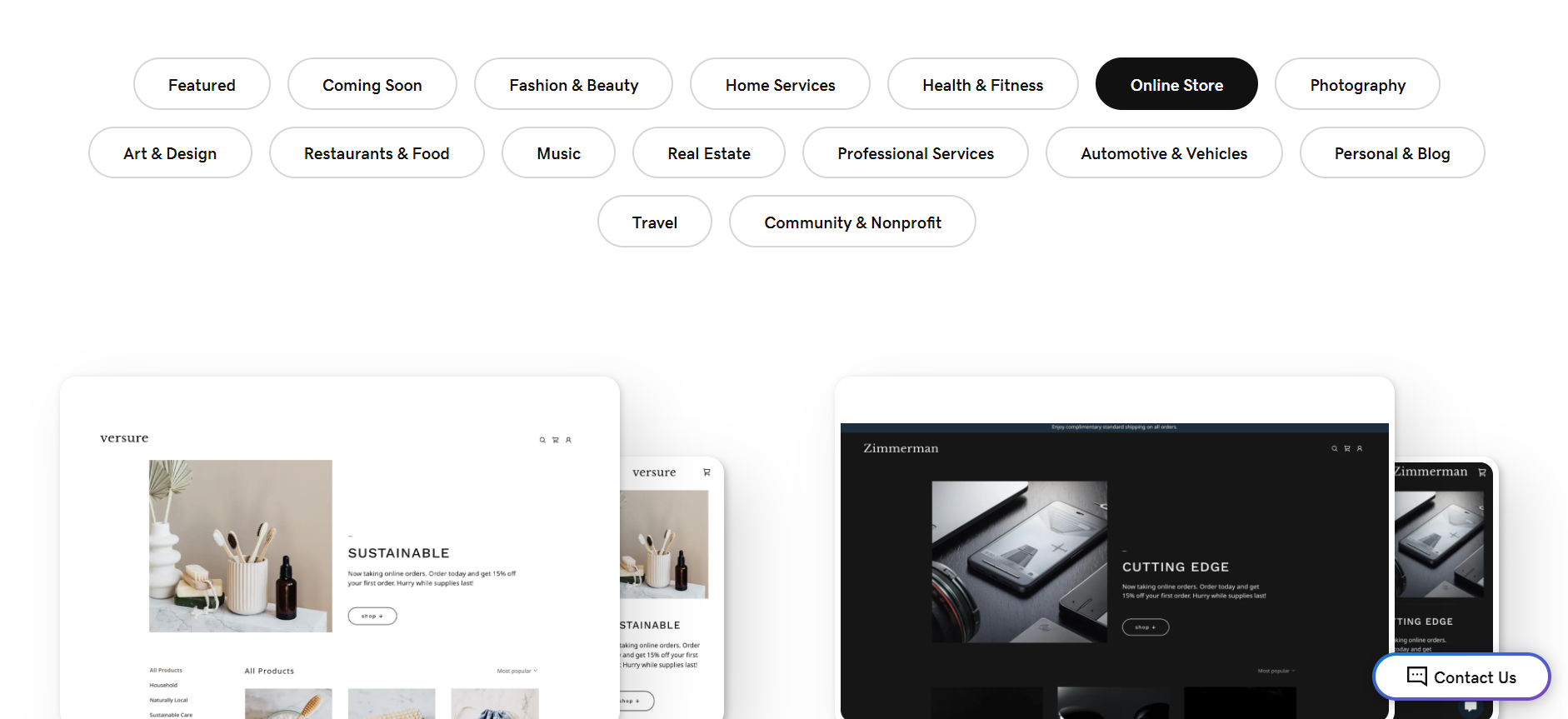

On the other hand, Webflow delivers a robust design experience with a diverse range of template and customization options. Boasting over 1000 pre-built templates covering various industries and website types, including free and premium options, Webflow ensures a constantly evolving library for users.
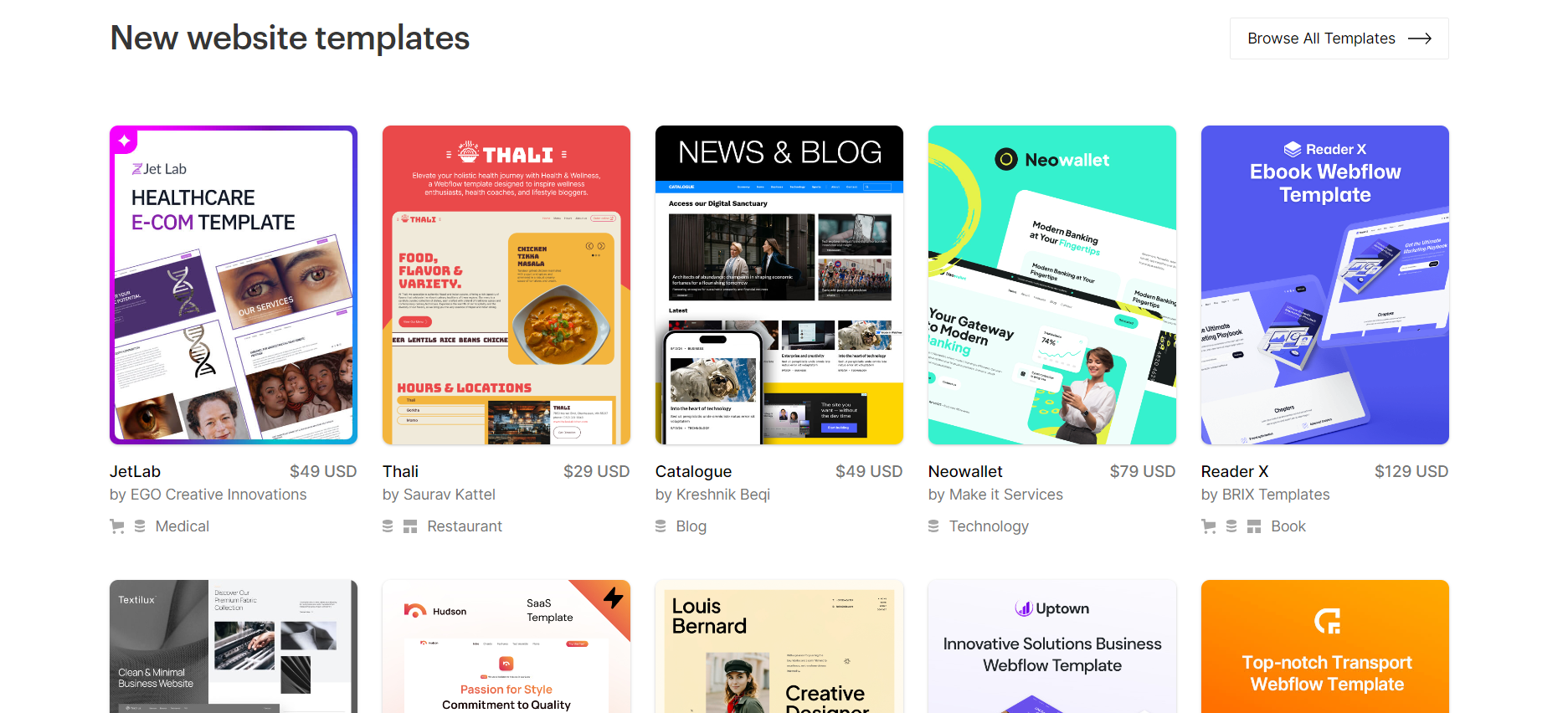
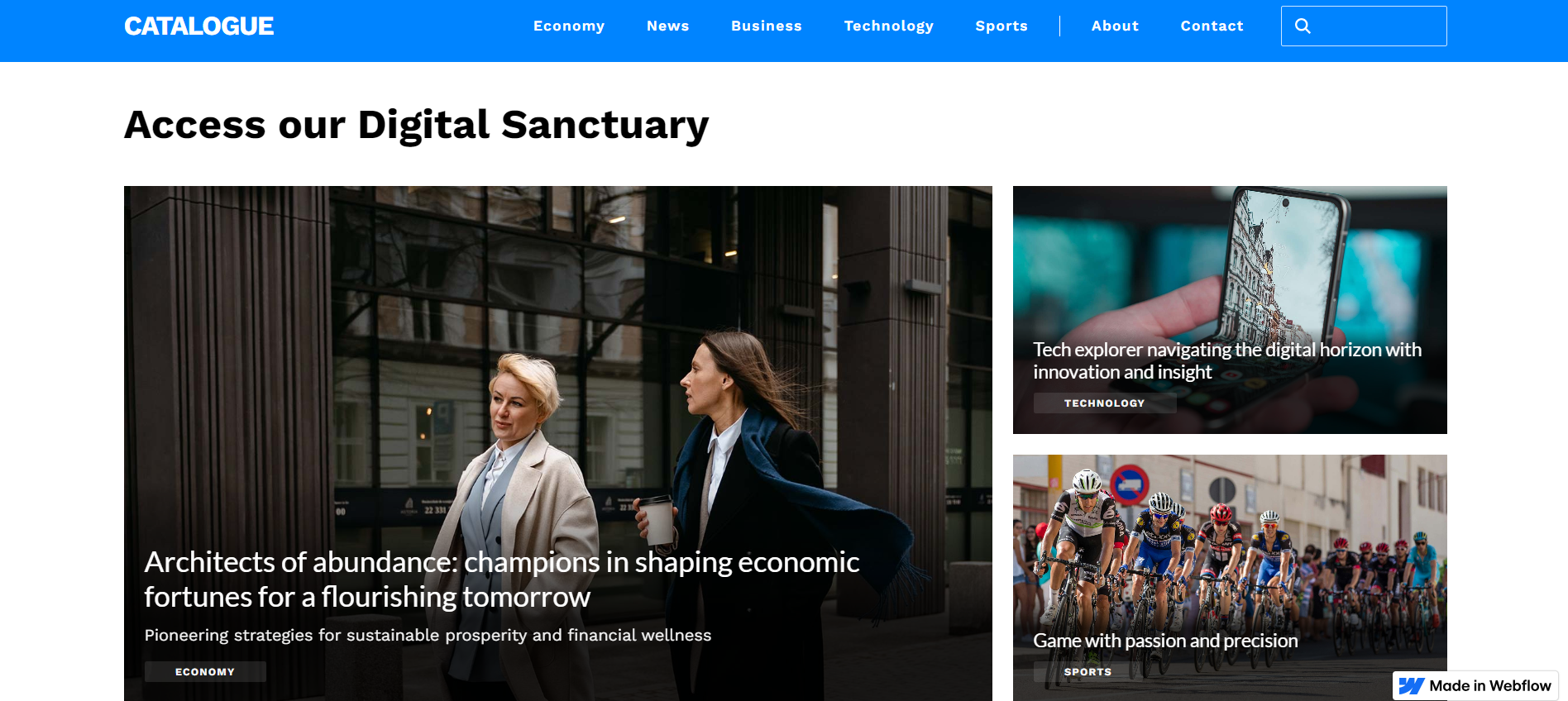
Get a head start on website creation with AI
Create a custom website tailored to your business needs 10X faster with 10Web AI Website Builder!
Ease of use
Ease of useReflects the platform’s overall user-friendliness.Score
Components:
- Learning curve (40%): Quickness and ease of getting started.
- Interface design (30%): Simplicity and intuitiveness of layout.
- User guidance (20%): Quality of tutorials and support.
- Flexibility (10%): Adaptability to various user skills.
 8.2
8.2
 7.5
7.5
🏆 Winner: GoDaddy
. Scoring 8.2, GoDaddy is known for its user-friendly platform, making it particularly popular among beginners. Webflow, with a score of 7.5, offers a visually intuitive interface but has a steeper learning curve, especially for those new to website design. If ease of use is a priority, GoDaddy is the clear winner in this category.
Learning Resources
🏆 Winner: Webflow
. Both platforms offer solid learning resources, but Webflow goes a step further with its comprehensive set of learning resources, including Webflow University and a thriving community of users.
For ecommerce
EcommerceMeasures the platform’s effectiveness in supporting online business activities.Score Components:
- Ecommerce themes and templates (20%): Variety and design of templates.
- Product management (25%): Ease of managing and organizing products.
- Payment options (25%): Variety and convenience of payment methods.
- Ecommerce features (20%): Features for managing an ecommerce store.
- Integration (10%): Compatibility with external e-commerce tools and services.
 7.2
7.2
 8.5
8.5
When it comes to ecommerce, Webflow outperforms GoDaddy with its robust platform for creating online stores, offering comprehensive ecommerce features such as easy store creation without coding, extensive customization options, product management with variations, inventory tracking, integration with major payment gateways, automated shipping calculations, tax configuration, and marketing tools like abandoned cart recovery and email marketing. GoDaddy, on the other hand, provides a user-friendly experience for setting up and managing online stores, with an easy-to-use website builder, integrated payment processing, flexible shipping options, and comprehensive tools for product and order management.

|

|
|
|---|---|---|
|
Ecommerce themes and templates |
6.5 |
7.5 |
|
Product page customization |
6.0 |
8.3 |
|
Payment processing and commissions |
7.5 |
7.8 |
|
POS capabilities |
6.0 |
6.5 |
|
Payment gateways |
7.0 |
8.0 |
|
Product numbers |
7.0 |
7.0 |
|
Additional ecommerce features |
6.5 |
7.9 |
GoDaddy ecommerce features:
- Payment processing
- Shipping options
- SEO tools
- Email marketing features
- Social media integrations
- Detailed reports
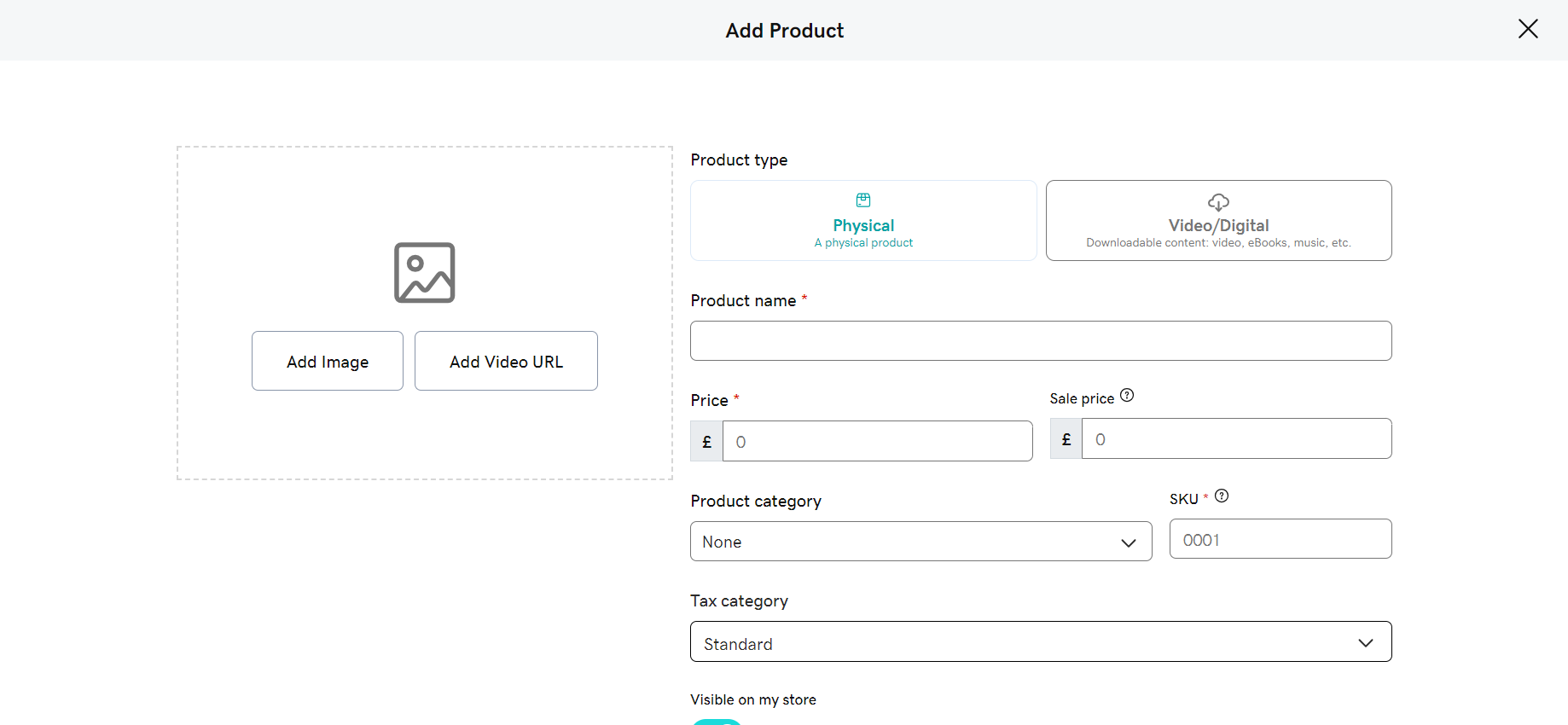
Webflow ecommerce features:
- Checkout and Payment Processing with Stripe, PayPal, etc.
- Marketing and Promotions
- Tax and Shipping calculations
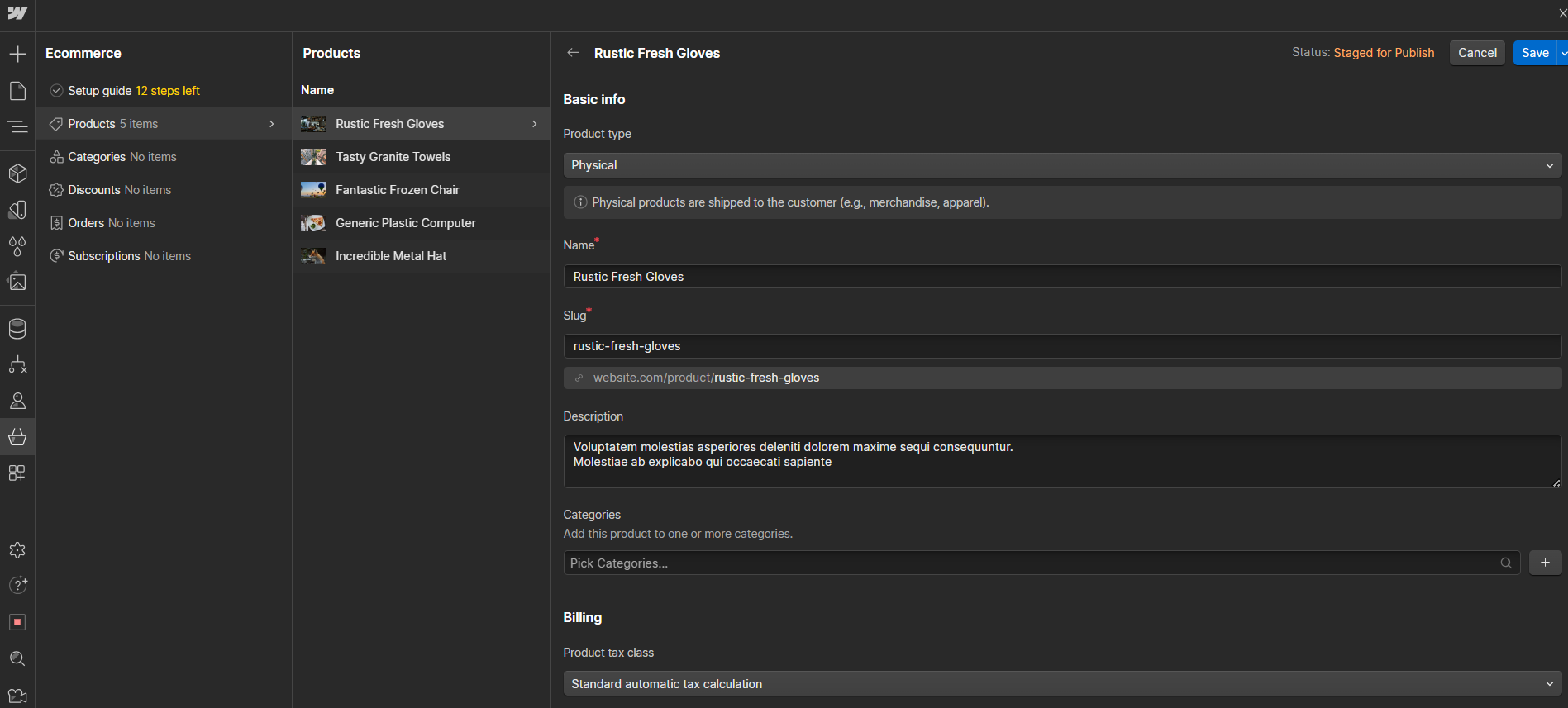
Ecommerce themes & templates
GoDaddy offers around 70-80 ecommerce themes, covering diverse industries and styles. However, these themes may lack the niche variety and cutting-edge designs found on dedicated ecommerce platforms, and extensive design changes might necessitate coding knowledge within the builder’s framework. In contrast, Webflow offers a diverse range of ecommerce themes and templates designed to cater to various types of online stores, from fashion and technology to artisan crafts and children’s products. Each template comes equipped with built-in ecommerce functionality, allowing you to easily add products and manage your store without the need for coding.
Product page customization
GoDaddy’s ecommerce platform offers users basic customization options like editing content, adding images, and adjusting layouts. For advanced customization, coding knowledge is required, enabling features such as custom CSS, third-party app integrations, and the creation of unique product page templates. On the other hand, Webflow offers extensive customization options for eCommerce product pages, allowing users to design and personalize their pages without coding. It provides tutorials for creating product pages from scratch, offers responsive templates for various devices, and allows users to add custom code and dynamic content using Webflow’s CMS for maximum customization flexibility.
Payment processing
GoDaddy Payments provides a versatile solution for online, in-person, and phone payments with a tiered pricing structure. Generally, online transactions have the lowest fees (2.3% + 30¢), while in-person and manually entered transactions have slightly higher rates (2.3% + 0¢). However, it may lack advanced Point of Sale (POS) features. Acting as its own payment gateway, GoDaddy Payments offers simplicity, but users requiring specific integrations with shopping carts or CRM systems may find limited support. In contrast, Webflow provides a flexible and secure platform for payment processing and ecommerce through integrations with leading payment gateways like Stripe and PayPal. This allows users to accept a wide range of payments, including credit card transactions directly from their websites. Given the versatility of Stripe and PayPal, businesses can manage online sales efficiently, and these integrations likely support various transaction types, potentially including POS transactions for physical sales environments.
Website Editors
Website EditorsEvaluates the platforms’ website building and editing capabilities.Score Components:
- Customization tools (40%): Range and power of editing features.
- Editor usability (30%): User experience within the editor.
- Design flexibility (20%): Freedom in layout and design changes.
- Update and maintenance ease (10%): Simplicity of updating and maintaining the site.
 6.7
6.7
 9.0
9.0
🏆
Winner: Webflow
. With a score of 9.0, Webflow’s editor is praised for its intuitive visual interface that simplifies the process of designing and editing responsive websites without requiring deep technical knowledge. It offers a perfect blend of ease of use for beginners and the flexibility for more advanced users, enabling significant cost savings by allowing users to customize and manage their sites without hiring professionals.
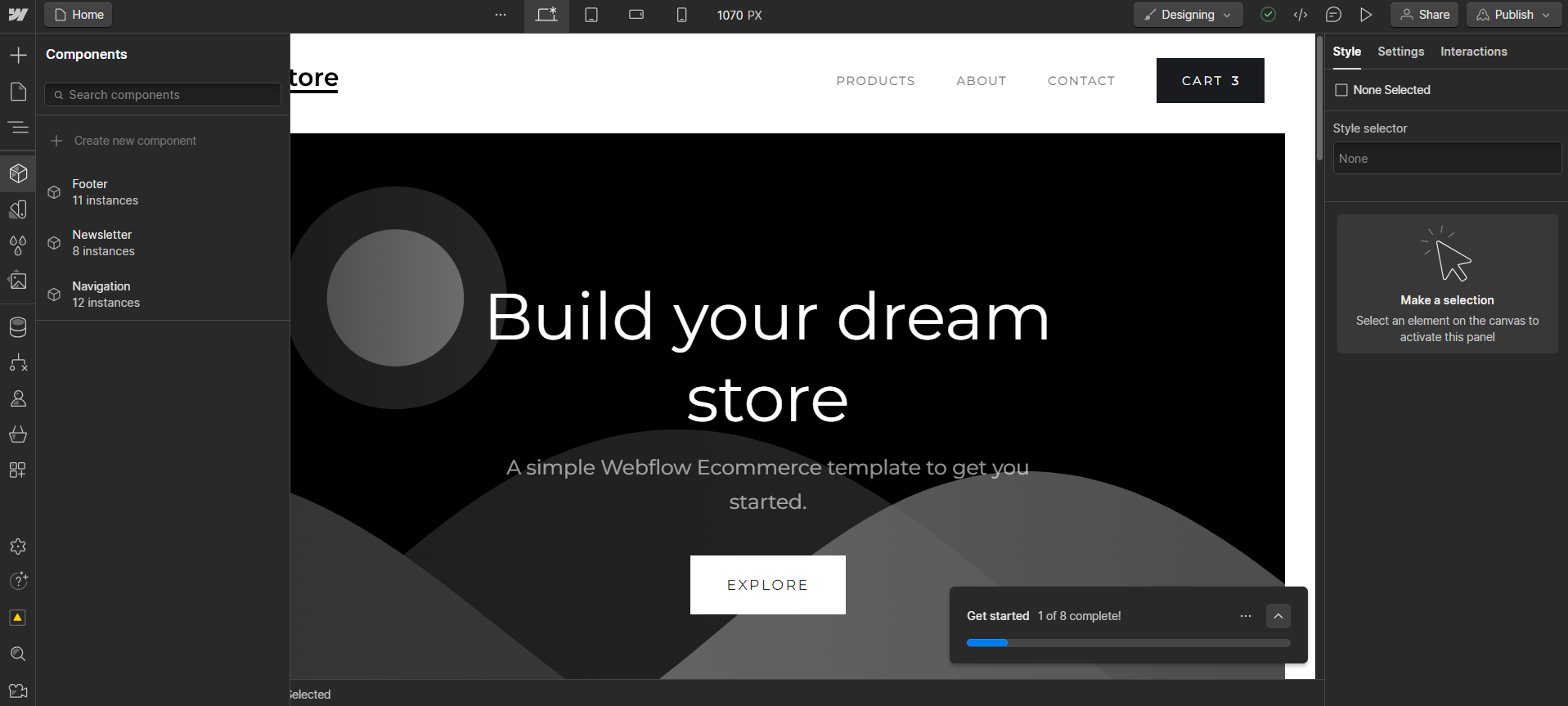
GoDaddy’s editor, scoring 6.7, is a user-friendly drag-and-drop tool enabling website creation without coding. It offers pre-designed templates, a mobile-friendly interface, basic SEO tools, and ecommerce integration, making it accessible for beginners, with affordable pricing plans and an all-in-one solution. However, it has some design limitations, basic features compared to dedicated platforms, a learning curve for extensive use, and potentially limited third-party app integrations.
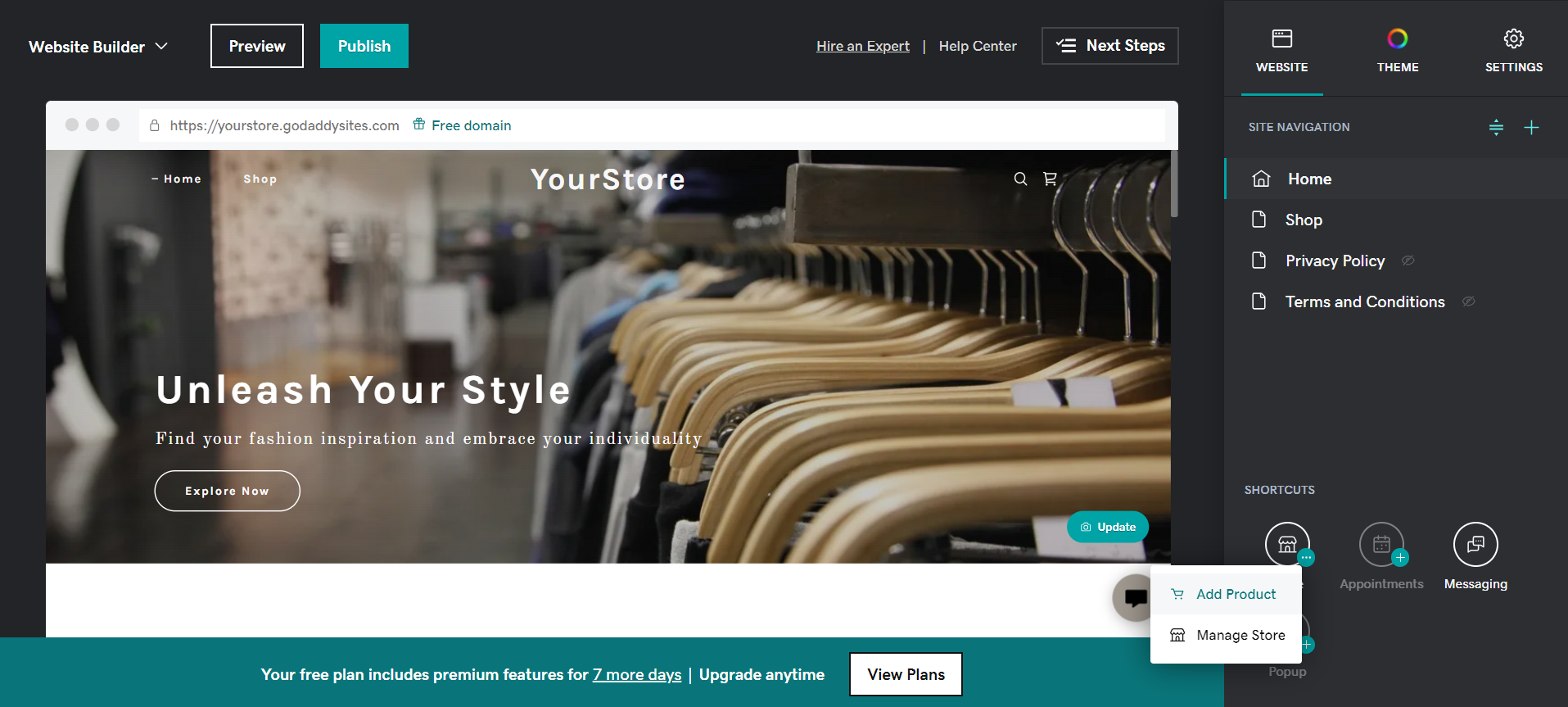
Mobile editor/app
 5.5
5.5
 7.0
7.0
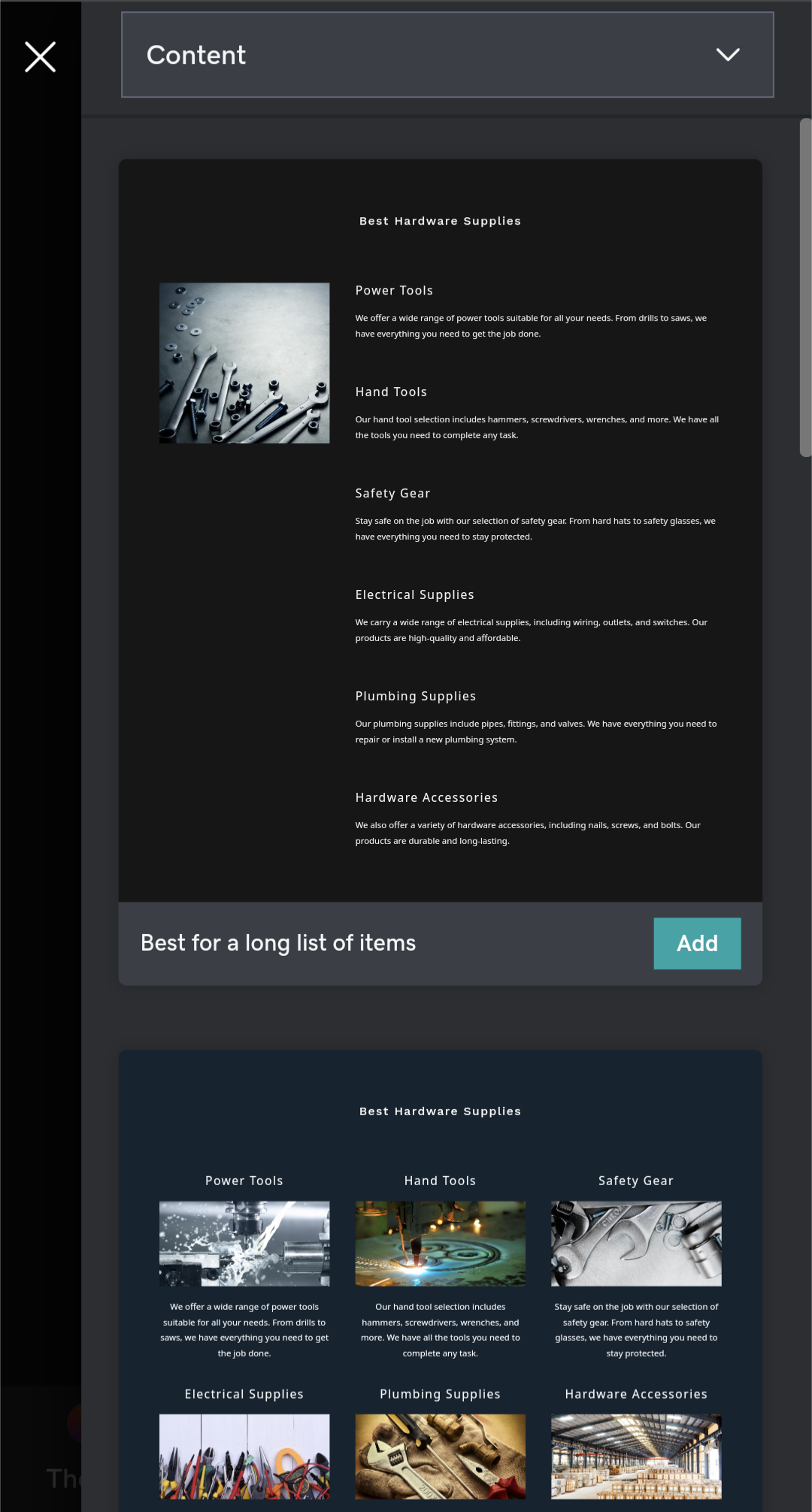
🏆
Winner: Webflow
. Both GoDaddy and Webflow do not offer a dedicated mobile app for editing websites. However, GoDaddy allows users to log into their account and access the website builder through a mobile web browser. The experience might be slightly more constrained on a smaller screen.
On the other hand, Webflow has a third-party app called EditFlow, created by a community member for Webflow users. Currently, the app is only available for iOS. This gives Webflow an edge over GoDaddy in terms of mobile editing capabilities.
In summary, Webflow receives a higher rating due to the availability of a third-party app for mobile editing, while GoDaddy’s mobile editing capabilities are limited to accessing the website builder through a mobile web browser.
Product testing options
Product Testing OptionsAssesses the options for trying out platform features before commitment.Score Components:
- Trial quality (40%): Extent and usefulness of the trial or free version.
- Feature accessibility (30%): How many features are available to test.
- Trial duration (20%): Length of the trial period.
- Ease of transition (10%): Smoothness of moving from trial to paid plans.
 8.1
8.1
 6.3
6.3
Overall Result
:
GoDaddy Wins
. GoDaddy scores 8.1, offering a free version, no trial version but a 30-day money-back guarantee, and the possibility to test all premium features within the refund window. Webflow, scoring 6.3, also offers a free version but no trial version or money-back guarantee, and only allows testing of some basic features.

|

|
|
|---|---|---|
|
Free Plan |
Yes | Yes |
|
Trial Duration |
No (30-day money-back guarantee) | No |
|
Testing Premium Features |
All features within refund window |
Basic features with free plan |
|
Money Back Guarantee |
30 days | No |
Price
PriceLooks at the cost-effectiveness and value for money of each platform.Score Components:
- Plan value (40%): What each pricing tier offers.
- Transparency and clarity (30%): Clearness of pricing structures.
- Flexibility of plans (20%): Range of options to suit different budgets.
- Hidden costs (10%): Additional expenses not included in the plan.
 7.9
7.9
 8.0
8.0
Webflow and GoDaddy offer a range of pricing options, with Webflow scoring slightly higher in terms of price.
Both platforms offer discounts on annual plans, with GoDaddy offering discounts ranging from 29 to 31% and Webflow offering discounts ranging from 9 to 31%. Both platforms also offer enterprise plans for larger organizations with advanced requirements.

|

|
|
|---|---|---|
|
Free |
Free ($0/month): Build a basic website with limited templates, storage, and features. Ideal for testing the platform. |
Starter (Free): Limited features for new sites, including 2 static pages and 50 form submissions lifetime. |
|
$0-$8 |
Basic ($5.99/month): More templates, custom domain support, email marketing, SEO tools, social media integrations, analytics. Ideal for personal websites and small businesses. Value for price: 6.5 |
No offering at this amount. |
|
$8-$10 |
Premium ($9.99/month): All Basic features + blog, ecommerce with product listings and payments, advanced marketing tools, and analytics. Ideal for businesses with online sales or growing web presence. Value for price: 8.0 |
No offering at this amount. |
|
$10-$17 |
Commerce ($15.99/month): All Premium features + advanced ecommerce tools like cart recovery, discounts, reviews, memberships, and unlimited products. Ideal for businesses with significant online sales and complex product offerings. Value for price: 9.0 |
No offering at this amount. |
|
$17-$20 |
Pro ($19.99/month): All Commerce features + priority support, higher bandwidth, website security, and CDN. Ideal for businesses with high traffic and critical online presence. Value for price: 9.5 |
Basic ($18/month): Suitable for simple sites with a custom domain, including basic SEO controls and 500 monthly form submissions. And 100 pages. Value for price: 6.5 |
|
$20-$30 |
No offering at this amount. |
CMS ($29/month): For content-driven sites with 2,000 CMS items, 1,000 monthly form submissions, and full API access. And 150 website pages. Value for price: 7.5 |
|
$40-$45 |
No offering at this amount. |
Standard ($42/month): For new businesses with up to 500 ecommerce items, includes basic ecommerce features, and 2% transaction fee. Value for price: 8.5 |
|
$45-$50 |
No offering at this amount. |
Business ($49/month): High traffic capacity, advanced features like site search, and up to 10 content editors. Value for price: 8.0 |
|
$80-$90 |
No offering at this amount. |
Plus ($84/month): Higher volume businesses with 0% transaction fees, up to 5,000 ecommerce items, and advanced features. Value for price: 9.0 |
|
$200+ |
No offering at this amount. |
Advanced ($235/month): Scalable solution for large online stores with up to 15,000 ecommerce items and the highest caps and 0% transaction fees. Value for price: 9.5 |
location. As a result in rare cases the prices displayed here can differ from the ones you see on their
websites.
Hosting quality
Hosting
qualityExamines the reliability and performance of the hosting solutions.Score Components:
- Uptime (40%): Consistency and reliability of website availability.
- Speed (30%): Loading times and performance.
- Bandwidth and storage (20%): Sufficiency of resources provided.
- Data centers (10%): Quality and distribution of hosting infrastructure.
 7.8
7.8
 8.9
8.9
Winner: Webflow
. Webflow’s managed hosting, with a 99.99% uptime and reliance on a globally distributed network of data centers from Amazon Web Services (AWS) and Fastly, provides a robust and reliable hosting solution. GoDaddy, while offering a range of hosting types and a 99.9% uptime guarantee, falls short in comparison due to potential extra costs and inode limitations on certain plans.

|

|
|---|
Website Speed Optimization
Website Speed OptimizationEvaluates optimization of website loading timesScore Components:
- PageSpeed Score (30%): Google’s score indicating performance optimization.
- Loading Time (30%): The average time until a website is fully interactive.
- Mobile Optimization (15%): Optimization effectiveness for mobile devices.
- Resource Optimization (15%): Optimizing images, scripts, and other heavy resources.
- CDN Usage (10%): Use of CDN to enhance speed across geolocations.
 7.6
7.6
 8.1
8.1
🏆 Winner: Webflow
Both GoDaddy and Webflow prioritize website performance and page speed, but Webflow’s custom cache settings, custom element lazy loading, automatic minification, responsive templates, and CDN give it an edge over GoDaddy.

|

|
|
|---|---|---|
|
Focus |
CDN, Automatic Maintenance, Resource Optimization |
Custom Cache Settings, Custom Element Lazy Loading, Automatic Minification, Responsive templates, CDN |
|
Performance Tools |
Google Lighthouse, PageSpeed Insights |
Google PageSpeed Insights Integration |
|
Key Strategies |
CDN, Automatic Maintenance, Resource Optimization |
Custom Cache Settings, Custom Element Lazy Loading, Automatic Minification, Responsive templates, CDN |
|
Load Times |
Shared Hosting: 2-4 seconds, VPS Hosting: 1-2 seconds, Dedicated Server: 0.5-1.5 seconds |
Below 2 seconds average |
|
Page Speed Scores Range |
Shared Hosting: 50-70/100, VPS Hosting: 70-85/100, Dedicated Server: 80-95/100 |
77.2/100 |
|
Core Web Vitals Improvement |
Infrastructure upgrades, improved server infrastructure and data centers, effective caching mechanisms, image optimization tools, and automatic minification of code files |
Improving components’ usability, and emphasis on LCP, FID and CLS |
Webflow’s approach to enhancing site speed includes custom cache settings, custom element lazy loading, automatic minification, responsive templates, and CDN. It has an average load time of below 2 seconds and a PageSpeed score of 77.2/100. Webflow has also improved its Core Web Vitals by improving components’ usability and emphasizing on LCP, FID, and CLS.
GoDaddy, on the other hand, focuses on CDN, automatic maintenance, and resource optimization. It has different load times and PageSpeed scores for shared hosting, VPS hosting, and dedicated server. GoDaddy has also enhanced its platform through infrastructure upgrades, including improved server infrastructure and data centers, resulting in faster loading times. Additionally, the implementation of effective caching mechanisms, image optimization tools, and automatic minification of code files contribute to a smoother user experience and improved Core Web Vital metrics. The website builder features optimized templates and code structures for efficient rendering, further enhancing overall performance.
Get a head start on website creation with AI
Create a custom website tailored to your business needs 10X faster with 10Web AI Website Builder!
Plugins and integrations
Plugins and integrationsMeasures the range and effectiveness of additional plugins and integrations.Score Components:
- Variety of options (40%): Range of available add-ons.
- Integration smoothness (30%): Ease of integrating plugins into the site.
- Quality of plugins (20%): Functionality and reliability of the options.
- Custom integration capabilities (10%): Support for custom or third-party integrations.
 7.3
7.3
 5.5
5.5
🏆 Winner: GoDaddy.
With a score of 7.3, GoDaddy offers a more extensive range of plugins and integrations compared to Webflow, which scores 5.5. GoDaddy’s Managed WordPress Hosting and Unmanaged WordPress Hosting provide access to a vast WordPress plugin repository, covering diverse categories such as SEO, security, performance, ecommerce, forms, page builders, social media, backup, analytics, and more. On the other hand, Webflow offers a built-in library of website elements and functionalities, and integrates with a number of third-party services and tools. However, these integrations are not managed by Webflow, so the number of available options and their pricing structures can vary.
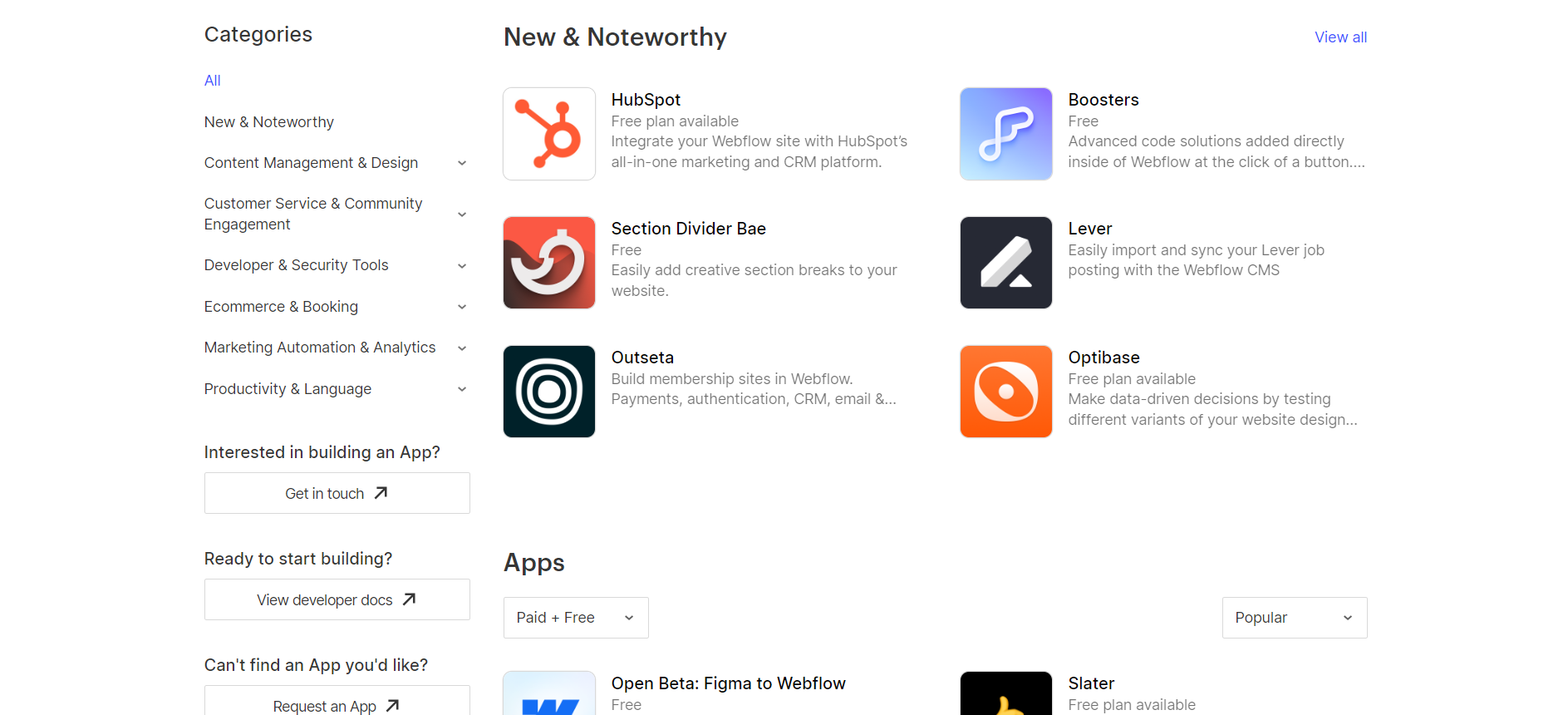
Marketing Features
Design FunctionalitiesRepresents how well each platform allows for creative design and customization of websites.Score Components:
- Template Variety (30%): Range and quality of design templates.
- Customization (30%): Flexibility and options for design alterations.
- User Interface (20%): Ease and intuitiveness of the design process.
- Responsiveness (10%): Adaptability to different devices and screen sizes.
- Innovation (10%): Unique design features and tools.
 7.3
7.3
 7.8
7.8
🏆
Overall Winner: Webflow
. Webflow edges out GoDaddy with a slightly higher score, indicating a more comprehensive set of marketing tools. Both platforms offer a range of features, including SEO tools, email marketing, blogging, social media integration, analytics and reporting, and ads and promotions. However, Webflow’s integrations with Google Analytics and Google Optimize, as well as its unlimited blogging capability, give it a slight advantage.

|

|
|
|---|---|---|
|
SEO Tools |
|
|
|
Email Marketing |
|
|
|
Blogging |
|
|
|
Social Media Integration |
Tools for social media linking and content sharing |
Simplifies content sharing and audience engagement |
|
Analytics and Reporting |
Basic analytics with more detailed insights on higher plans |
Integrates with Google Analytics for comprehensive web traffic and behavior analysis |
|
Ads and Promotions |
Features to create and track online ads, including Google Ads |
Supports ad and promotion management through integration with platforms like Google Optimize |
Customer Support
Customer supportEvaluates the quality and availability of support options.Score Components:
- Response time (40%): Speed of support responses.
- Support quality (30%): Effectiveness and helpfulness of the support.
- Availability (20%): Range of support channels (phone, chat, email).
- Resource richness (10%): Quality of self-help and educational materials.
 8.5
8.5
 8.3
8.3
🏆 Winner: GoDaddy
. Comparing GoDaddy vs Webflow, GoDaddy takes the lead in this category with its extensive 24/7 customer support options, including phone support in multiple languages, live chat, and email assistance. The platform also offers a 24/7 Community Forum and social media support, ensuring users have multiple avenues to seek help.
Webflow provides robust customer support through live chat, email, and a community forum, with 24/7 availability. Additionally, Webflow offers comprehensive documentation and video tutorials to assist users. However, it falls slightly behind GoDaddy in terms of the variety and accessibility of support channels.
Security
SecurityLooks at the platforms’ security measures and data protection.Score Components:
- Data protection (40%): Safeguards for user and customer data.
- SSL and encryption (30%): Implementation of secure connections.
- Compliance (20%): Adherence to industry security standards.
- Regular updates (10%): Frequency of security updates and patches.
 6.8
6.8
 7.8
7.8
🏆
Winner: Webflow
. Webflow takes the lead in security with a score of 7.8, compared to GoDaddy’s 6.8. Webflow’s commitment to data privacy and security is evident in their robust encryption techniques, strict access controls, and regular system updates and audits. They also offer SSL encryption, regular security audits, and two-factor authentication for added security.
GoDaddy, while offering encryption and adhering to security standards, provides limited options for private data storage protection. Their website security features include SSL certificates, malware scanning, and web application firewalls, with additional options for DDoS protection and CDN. However, users seeking comprehensive data security and compliance with regulations like HIPAA or GDPR may need to consider alternative solutions.
AI Capabilities
AI capabilitiesMeasures the effectiveness of AI-driven features and tools.Score Components:
- Automation efficiency (40%): Impact of AI on streamlining processes.
- Personalization (30%): AI-driven customization for users or customers.
- AI-Assisted design (20%): Role of AI in website design and functionality.
- Data analysis (10%): Use of AI in interpreting user data and analytics.
 7.5
7.5
 8.3
8.3

|

|
|
|---|---|---|
|
AI Builder |
|
|
|
AI Ecommerce features |
AI-generated product descriptions, customer service tools, and digital ad creation |
|
|
AI Content Generation |
AI-generated product descriptions, customer service messages, and social media ads |
|
|
Additional AI features |
|
Announced plans for smart design suggestions and AI-powered content management |
🏆 Winner: GoDaddy
. GoDaddy, with a score of 7.5, currently has more AI capabilities than Webflow, particularly in the area of ecommerce. Its AI features are designed to save time and improve work-life balance for small business owners.
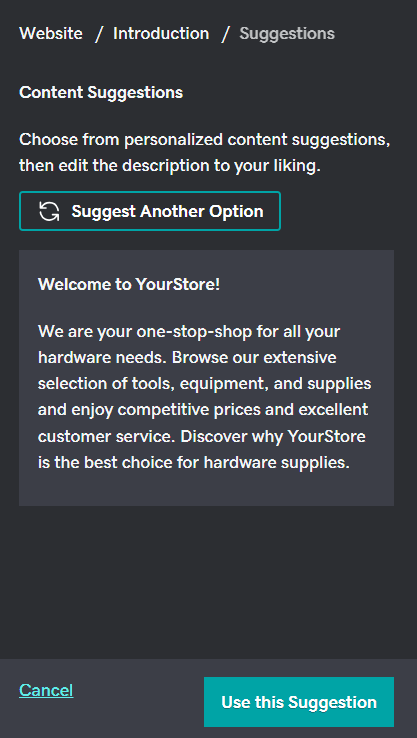
Webflow, with a score of 8.3, does not currently have AI capabilities. However, they have announced plans to introduce AI features in the future, including smart design suggestions and AI-powered content management. These future plans could potentially make Webflow a strong competitor in terms of AI capabilities.
User Management
User ManagementAssesses the platforms’ capabilities in managing user roles, permissions, and accessibility.Score Components:
- Role Customization (40%): Flexibility in creating and defining user roles and
permissions. - Ease of Management (30%): User interface and tools for managing users.
- Access Control (20%): Effectiveness of access control measures for different user
levels. - Scalability (10%): Ability to manage a growing number of users efficiently.
 7.3
7.3
 8.3
8.3
🏆 Winner: Webflow
. Both GoDaddy and Webflow offer different approaches to user management, with varying levels of access and control based on user roles.
- GoDaddy’s number of users who can edit a website varies based on the hosting plan and website building tool. The free plan permits one user, while Deluxe and Ultimate plans allow up to five users with full editing permissions.
- Webflow’s number of users who can edit a website and their access levels vary by plan. Core, Growth, and Enterprise plans offer unlimited editors, while others limit content editors to 3 or 10 per site.
GoDaddy User Roles and Access Levels:
| Role | Description | Access Highlights |
|---|---|---|
| Account Holder | The primary owner of the GoDaddy Website Builder account. | Full access to all website builder features, domain management, hosting settings, and account settings. |
| Delegate Access | Users granted permission by the account holder to access specific parts of the GoDaddy account. | Can be given varying levels of access, from managing domains and products to making purchases on behalf of the account holder. |
| Website Editor | Users with permissions to edit and update the website through the Website Builder interface. | Can customize the website, add or edit sections (e.g., image galleries, menus), and update content. |
| Online Store Manager | Specifically for websites with e-commerce capabilities, managing product listings, orders, and payments. | Access to manage the online store, including product listings, coupons, shopping cart, shipping, and payments. |
Webflow User Roles and Access Levels:
| Role | Description | Access Highlights |
|---|---|---|
| Workspace Owner | Full control over Workspace settings and member management. | Edit settings, manage billing, access/edit all sites, invite/remove members, manage permissions. |
| Workspace Admin | Similar to the owner with some restrictions. | Edit settings, manage billing, access/edit all sites, invite/remove members (except owner), manage permissions. |
| Workspace Member | Limited control focused on site interaction. | Download invoices, access/edit sites, invite members. |
| Workspace Guest | Temporary collaborators with limited access. | Access/edit sites. |
| Workspace Commenter | Limited to commenting for feedback on sites. | Create/view/resolve comments, preview sites. |
| Site Admin | Full control at the site level. | Manage permissions, delete/transfer sites, billing management, design and publish changes. |
| Can Design | Design capabilities with some restrictions on publishing. | Design in Designer, create/modify classes and components, publish changes with permission. |
| Can Design (Limited) | Restricted design capabilities for Enterprise customers. | Create new classes, modify created classes, limited publishing capabilities. |
| Can Edit | Content editing without full design privileges. | Edit text/links/images, manage assets, publish Collection items and Ecommerce products. |
| Can Comment (Site Level) | Commenting for feedback at the site level. | Create/view/resolve comments, preview sites. |
Additional Features

|

|
|
|---|---|---|
|
SSL Certificate |
|
|
|
Custom Domain |
|
|
|
Free Custom Domain Included |
|
|
|
International Domains |
|
|
|
Mobile Responsive |
|
|
|
Page Speed |
|
|
|
Website Builder Mobile App |
|
|
|
Convert a Website To An App |
|
|
|
Website Analytics |
|
|
|
Multilingual Sites |
|
|
|
Multiple Users |
|
|
User Feedback
Users generally praise GoDaddy for its affordability, reliability, and user-friendly interface, particularly in domain registration and hosting services. However, concerns include occasional interface changes, perceived slowness in website hosting, and dissatisfaction with pricing increases.
Webflow receives high praise for its user-friendly interface, eliminating the need for coding while offering extensive design flexibility. Users appreciate its scalability, cost-effectiveness, and seamless integration of essential features like forms and CMS. However, some users note a slight learning curve and occasional limitations, particularly in ecommerce functionalities and content management. Overall, Webflow proves to be a powerful tool for building and managing websites, offering robust features for both beginners and experienced developers, albeit with some room for improvement in certain areas like collaborative editing and content management.
The making of this blog
We followed a clear, step-by-step process to write and research this article.
FAQ
Which platform is better for beginners, GoDaddy or Webflow?
Can I use both GoDaddy and Webflow for ecommerce?
How do GoDaddy and Webflow differ in terms of design flexibility?
What are the major differences in pricing between GoDaddy and Webflow?
Which platform offers better customer support, GoDaddy or Webflow?










